Recent Articles
Popular Makes
Body Types
2021 Jeep Cherokee vs 2021 Subaru Forester
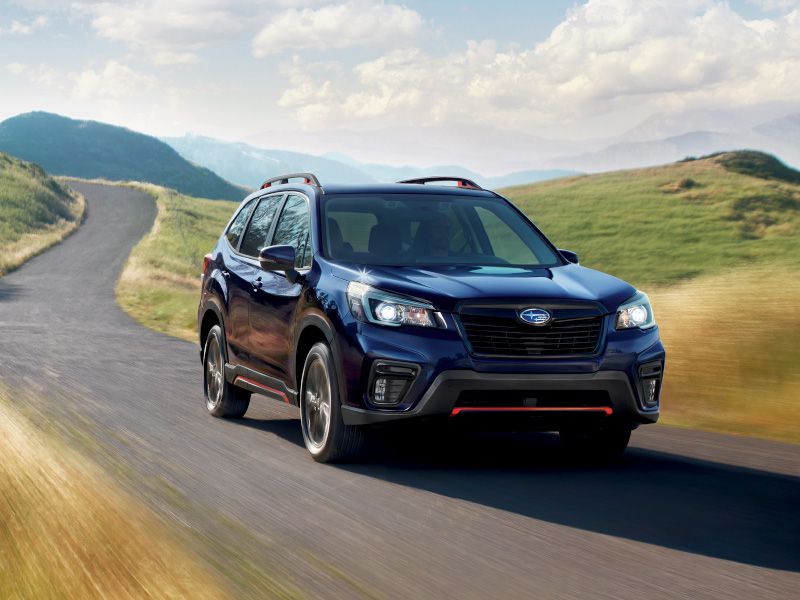
2019 Subaru Forester Sport ・ Photo by Subaru
The Subaru Forester and the Jeep Cherokee are both very popular compact SUVs whose brands make a statement. Subaru is known for its advanced safety, while Jeep is the premier off-road marque in the world. This comparison pits the Forester against the Cherokee in the most popular segment in the American market. We focus on both the similarities and the differences of the two vehicles, and see how they maintain their brand heritages while serving customers with the same basic needs. What we learned after spending a great deal of time evaluating each of these vehicles is they both fulfill the requirements of any shopper seeking a five-passenger compact SUV. And at the same time, they do it in a way that is very true to their brand personas and consumer expectations.
Exterior Style
When you look at a Cherokee, you see a Jeep. No, it is not the iconic shape of the legendary Wrangler, but from front to rear, the Cherokee was designed and engineered to fulfill the Jeep promise. That speaks to esoteric stats like approach and departure angles and to more obvious things like the trademark seven-slot grille. The Forester is less distinctive than the Cherokee largely because it lacks a brand identifier that is as strong as the Jeep grille motif. When you look at the two vehicles side by side, you are struck by their similarities in things like windshield rake, side window treatment, and rear-end styling. In overall length, the Cherokee and the Forester are virtually identical, with just 0.1 inch in difference between them. But the Forester is two inches wider. The Cherokee’s turning radius is a bit tighter than the Forester’s, which can help off-road and in urban parking situations. : Jeep Cherokee
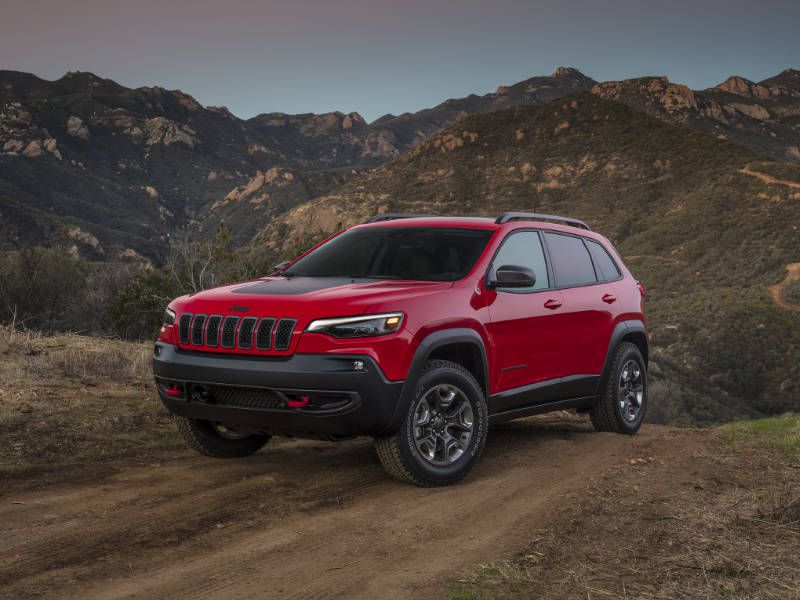
Photo by Fiat Chrysler Automobiles
Interior Design
Both the Cherokee and the Forester are prime examples of a trend to better-designed interiors using higher-quality materials. For instance, the Forester’s Premium trim includes luxury features like a 10-way power driver’s seat with power lumbar support, privacy glass, and a panoramic power moonroof. It also offers keyless entry and push-button start. The top-level Touring trim is even more luxurious with perforated leather seats and heated rear seats. The Cherokee counters with the new Latitude Lux trim level for 2021. It offers remote start, Nappa leather upholstery, power-operated heated front seats, heated steering wheel, and a windshield wiper de-icer. The Forester’s Sport trim has a youthful, outdoorsy theme, using dark gray material with orange stitching and accents throughout the cabin. It should also be noted that in their base trims, the Forester and Cherokee are more, well, basic, but they are still comfortable and functional for up to five adults.
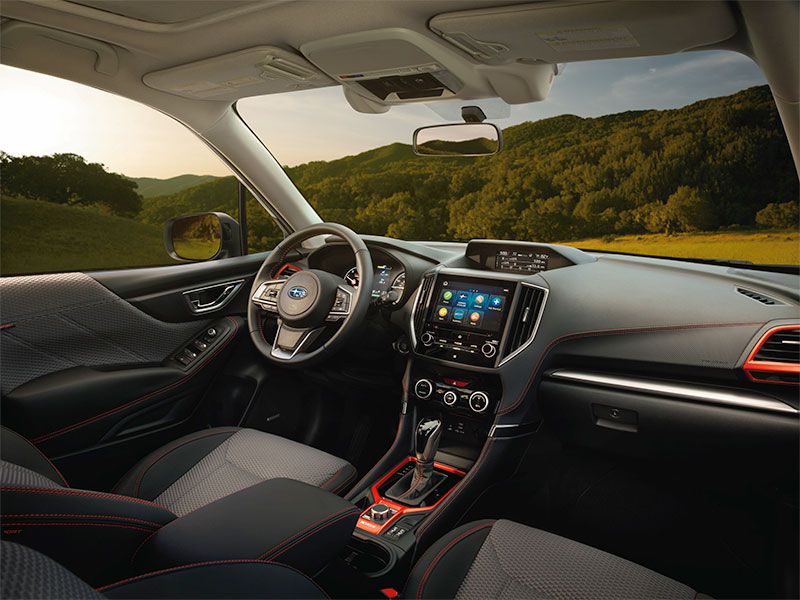
Photo by Subaru
Infotainment and Technology
The Cherokee and Forester offer easy-to-operate, feature-filled infotainment systems. The base-level Forester has a 6.5-inch Starlink Multimedia Plus system with a high-resolution touchscreen, Apple CarPlay, Android Auto, Bluetooth, SiriusXM, and a (throwback) CD player. An option package on the Sport trim includes an 8.0-inch display and Harman/Kardon sound system. An optional package on the Limited includes an 8.0-inch touchscreen system with integral navigation and the Harmon/Kardon audio, and those items are standard on the top-of-the-line Touring trim. In comparison, the 2021 Jeep Cherokee offers a standard 7-inch touchscreen and available 8.4-inch touchscreen with Apple CarPlay and Android Auto. Jeep’s UConnect system, which it shares with sibling brands like Dodge and Chrysler, is a joy to use with intuitive operation and large on-screen icons. A 4G LTE Wi-Fi HotSpot and Jeep Skill for Amazon Alexa are available as well.
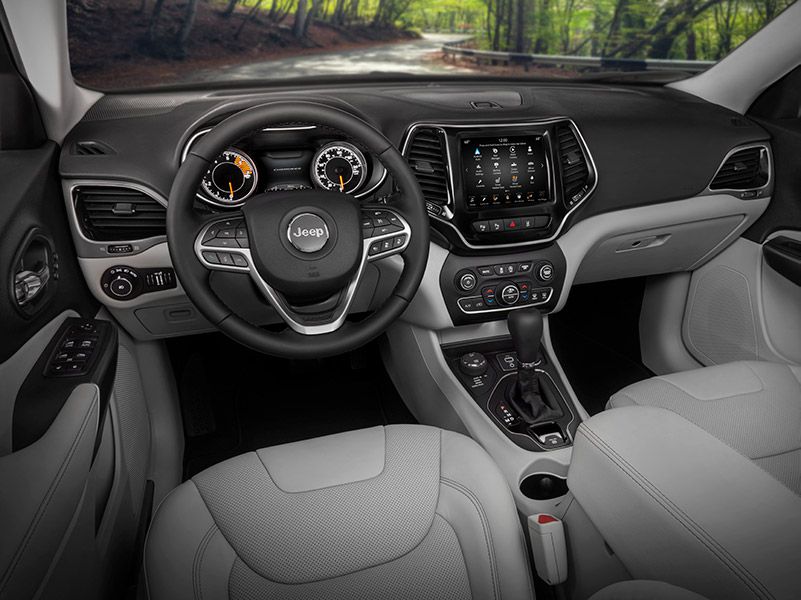
Photo by Fiat Chrysler Automobiles
Powertrains
The Subaru Forester crossover makes the choice of powertrain utterly simple. All Forester models are powered by a 2.5-liter horizontally opposed 4-cylinder “Boxer” engine. With the aid of direct injection, it produces 182 horsepower and 176 lb-ft of torque. In all cases, it is teamed with a continuously variable transmission (CVT) and Subaru’s famed Symmetrical All-Wheel Drive. The Forester’s powertrain is noted for fuel efficiency, delivering up to 33 mpg EPA-estimated highway fuel economy. In contrast to the Forester’s one-engine-fits-all approach, the 2021 Jeep Cherokee offers a variety of engine choices. The base engine is a naturally aspirated 180-horsepower 2.4-liter 4-cylinder, and a 271-horsepower 3.2-liter V-6 engine is also available. Perhaps the best choice is the 2.0-liter turbocharged direct-injection 4-cylinder. Paired with a 9-speed automatic transmission, it delivers 270 horsepower and 295 lb-ft of torque. Asserting its off-road prowess, the Cherokee offers three distinct 4x4 systems: Active Drive I, Active Drive II, and Active Drive Lock.
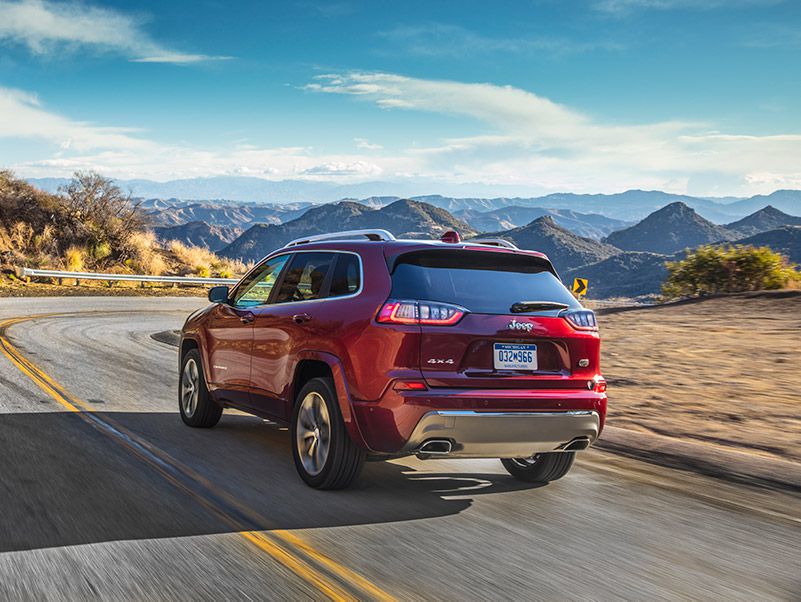
Photo by Fiat Chrysler Automobiles
Driving Impressions
The typical compact crossover buyer wants a comfortable, quiet, easy-to-maneuver vehicle. That’s just what they get with both the Forester and the Cherokee, though the Cherokee has the advantage of offering buyers more horsepower with its optional engines. With the standard 2.4-liter 4-cylinder engine, the Cherokee offers performance nearly equal to that of the Forester. An acceleration time of 0 to 60 mph in eight seconds isn’t exactly sporty, but that’s what you get with the Forester and the base Cherokee. But the Cherokee has powerful optional engines that offer more performance and added towing capabilities.
The Jeep Cherokee is also a strong off-roader, and it can be equipped to accomplish some pretty amazing things. The Trailhawk Trail Rated version of the Cherokee is the most capable off-roader in the class. Beyond the Trailhawk, other Cherokee 4x4 models can be equipped to perform very well in dirt, mud, and sand. The Subaru Forester’s all-wheel drive gives it some moderate off-road capabilities, but its strong suit is its highly capable on-road handling in any weather condition.
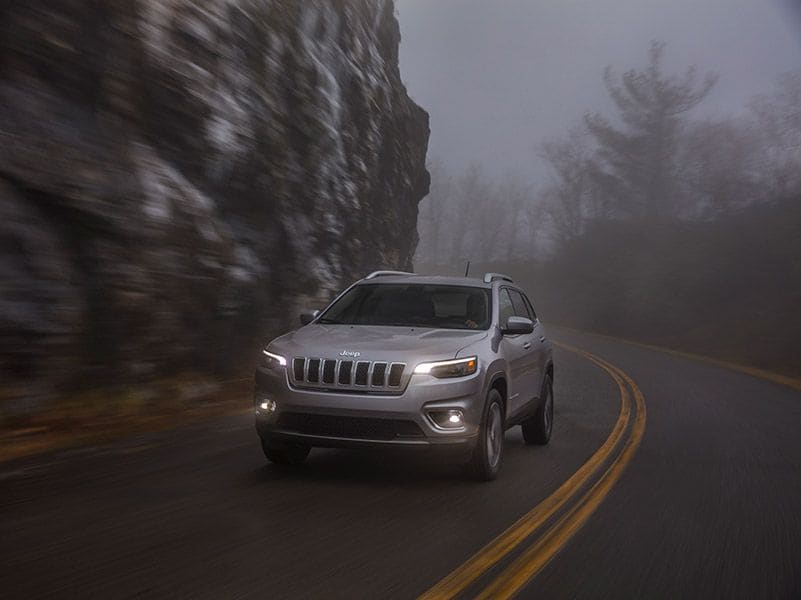
Photo by Fiat Chrysler Automobiles
Safety and Driver Aids
Another strong suit of the Subaru Forester is safety. Subaru EyeSight driver-assist technology is standard across the entire model line. For 2021, the system includes adaptive cruise control, pre-collision braking, pre-collision throttle control, lane departure and sway warning, and lead vehicle start alert. Blind-spot detection with lane change assist and rear cross-traffic alert are available on most trims as either standard equipment or as part of an option package. The Driver Focus Distraction Mitigation System looks for signs of driver distraction and fatigue. It’s standard on the Touring trim. The Cherokee’s newly standard active safety features for the 2021 model year include full-speed forward collision warning with automatic braking, lane-departure warning, lane-keeping assist, blind-spot warning, and rear cross-traffic alert. Rain-sensing windshield wipers and heated side mirrors are also standard. Two very helpful optional features are Adaptive Cruise Control-Plus and ParkSense Parallel/Perpendicular Park Assist. The latter uses ultrasonic parking sensors on the bumper to find and guide you into an available parking space.
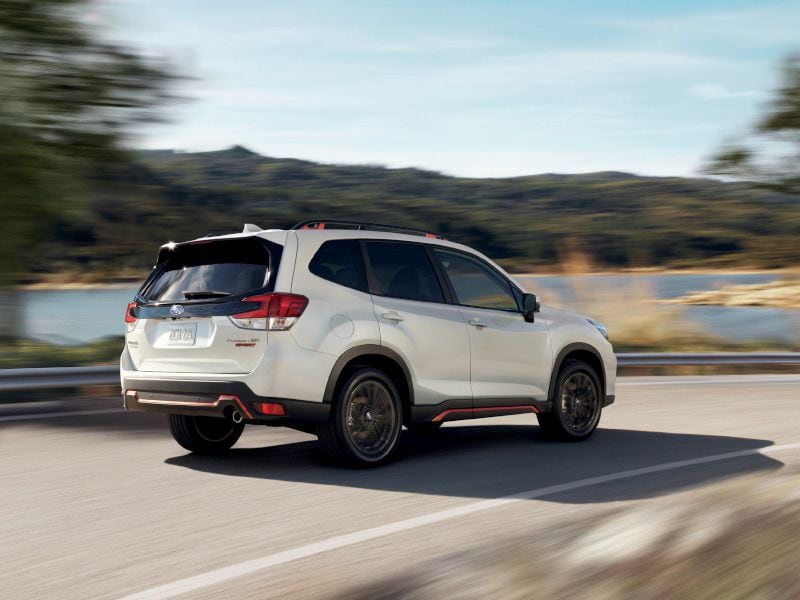
Photo by Subaru
Interior Space and Cargo Capacity
Perhaps because of its higher roofline, the Subaru Forester offers more cargo space than the Jeep Cherokee. The Jeep offers more passenger space, but the Forester outscores it in cargo-carrying space. Wheb the rear seats are in use, the Forester has 31.1 cubic feet of cargo space, compared to 25.8 cubic feet in the Jeep Cherokee. With the rear seatback folded, the Cherokee offers 54.7 cubic feet of cargo area, and the Forester offers a roomy 74.3 cubic feet. The Forester’s liftgate can be equipped with power operation including automatic close and height memory. The Cherokee’s lightweight liftgate is fashioned of composite, and it has a well-positioned release handle. A hands-free liftgate is also available. Equipped with the 271-horsepower 3.2-liter V-6 engine and the trailer tow package, the Cherokee offers a maximum towing of 4,500 pounds, compared to the Subaru’s 1,500-pound towing max.
: Tie
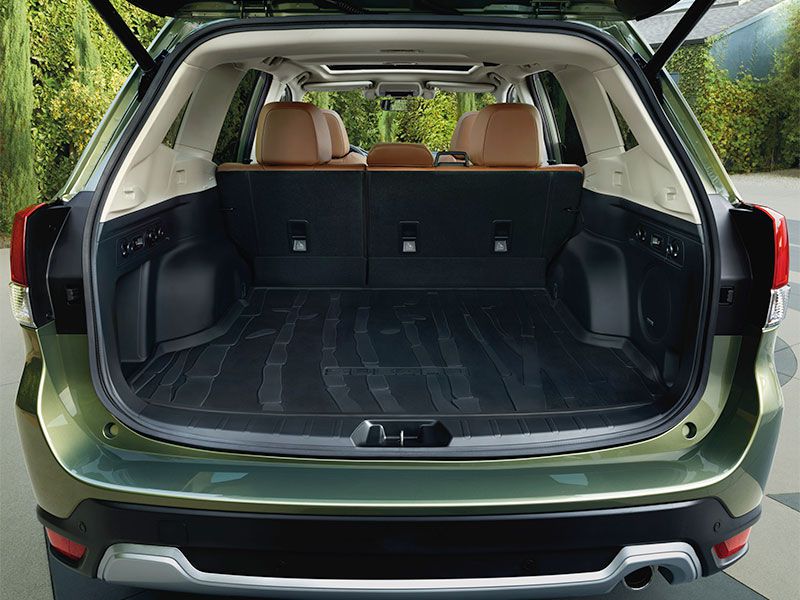
Photo by Subaru
Trim Levels
The Subaru Forester and the Jeep Cherokee offer a variety of trims, allowing buyers to tailor their vehicles to their needs. The Forester lineup has five trims – Base, Premium, Sport, Limited, and Touring. As you ascend the price ladder, more equipment becomes available and equipment on the options list slides into the standard column. The Touring is a “loaded” version of the Forester with virtually everything the vehicle offers.
The Cherokee is available in five different trim levels, too – Latitude, Latitude Plus, Trailhawk, Limited, and the Latitude LUX. Both front-wheel drive and 4x4 versions are offered in each trim level with the exception of the Trail Rated Trailhawk. It is only offered as a 4x4. To enable its uncompromised off-road abilities, it features the Jeep Active Drive Lock 4-wheel-drive system plus a locking rear differential, skid plates, and tow hooks.
: Jeep Cherokee
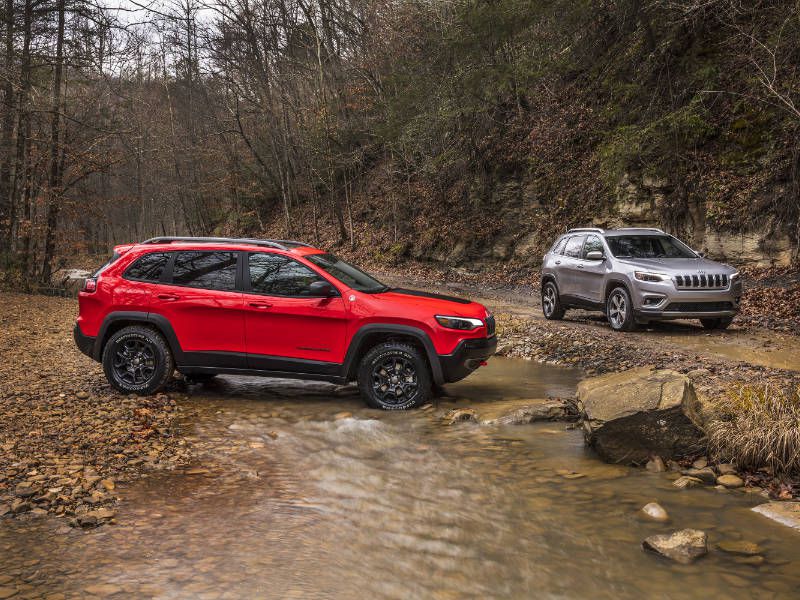
Photo by Fiat Chrysler Automobiles
Pricing and Value
The 2021 Jeep Cherokee lineup spans the gamut of inexpensive front-drive models to highly capable off-roaders to luxury 4x4s. In contrast, the Subaru Forester lineup is simpler, and it features only all-wheel-drive vehicles. It doesn’t offer a front-drive version, but its base level Forester is about $2,500 less than the front-wheel drive base Cherokee. On the specialty vehicle front, the Forester Sport has hill descent control, X-Mode driving mode selection, and added safety features for a bit over $30,000 including a $1,050 destination charge. The top-of-the-line Touring has an MSRP of $35,945. Looking at the middle of the Cherokee lineup, the new Latitude LUX trim 4x4 has an MSRP of around $32,000 plus a $1,495 destination charge. The very luxuriously equipped Limited trim level in 4x4 configuration costs about $36,000 plus the $1,495 destination. The Jeep Cherokee's premier off-road model, the Trailhawk, has a suggested retail of about $36,000 plus the destination charge.
: Subaru Forester
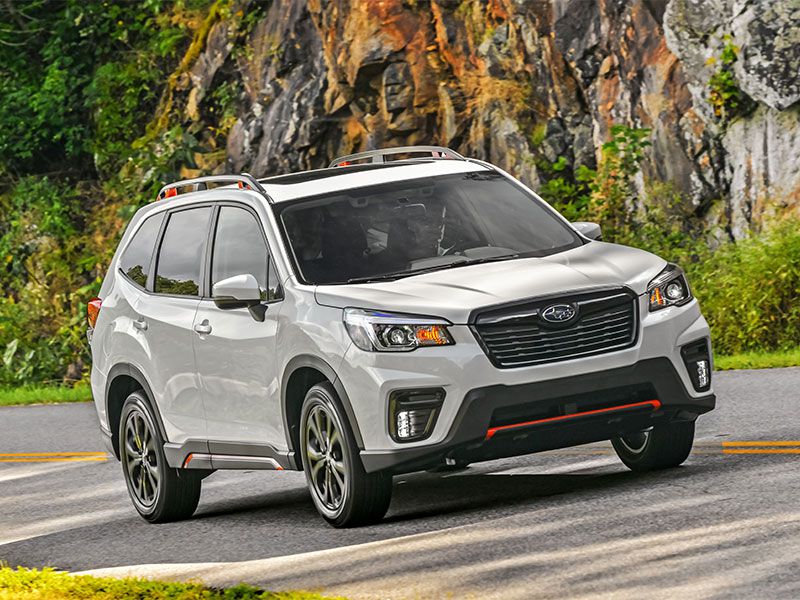
Photo by Subaru
And the Winner Is…
The race between the Jeep Cherokee and the Subaru Forester is a very tight one. The Forester offers all-wheel drive and robust safety features even in its lowest trim. So if you're looking for a vehicle for on-road driving that will help you feel secure in all weather conditions, the Forester is an excellent choice. On the other hand, the Jeep Cherokee offers the choice of front- or four-wheel drive, several engine options, and some versions that will go practically anywhere. Plus, if you plan to tow, the Cherokee is a much better choice. The Subaru brings a safety reputation and a strong safety array, but Jeep has upped its standard safety equipment to the point where it's nearly equal to that of the Forester. In summary, the Forester is a very handy everyday vehicle that offers great peace of mind. But when you factor in the added capabilities like towing and off-roading, the winner is the 2021 Jeep Cherokee.
: Jeep Cherokee
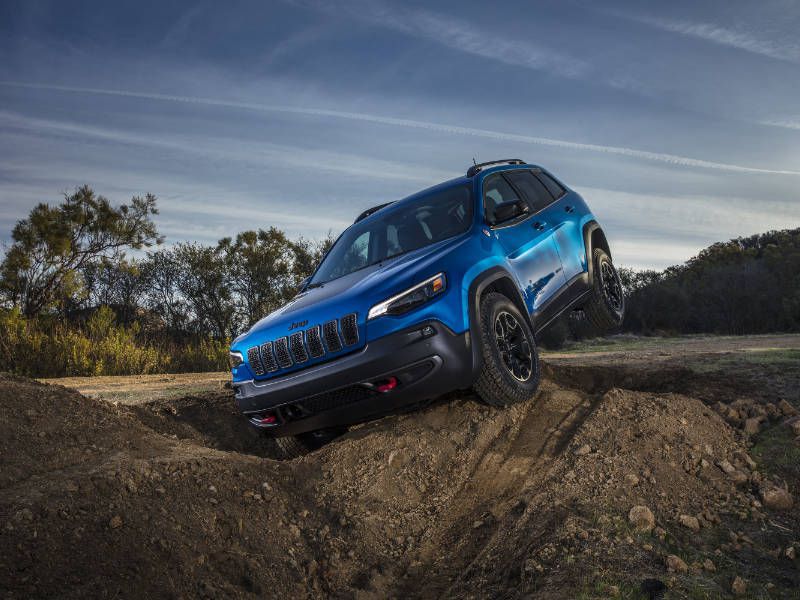
Photo by Fiat Chrysler Automobiles